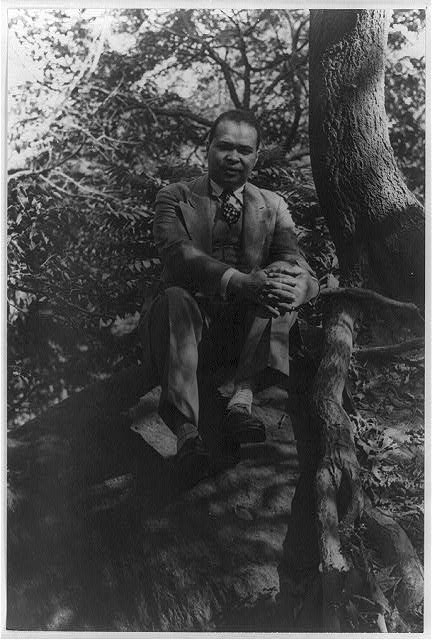Poems (1920s) by Langston Hughes and Countee Cullen
Introduction
Langston Hughes and Countee Cullen were two of the most influential poets of the Harlem Renaissance movement. While Hughes sought to find a poetic form that could speak to a broad range of black experience, Cullen pursued beauty above all, adhering to a more traditional view of poetry. In the poems selected here, each poet addresses the nature of black identity and experience, as well as the welcome that black artists and writers received in France. Click here Links to an external site. for more on Hughes; click here Links to an external site. for more on Cullen.
Questions to guide your reading...
Langston Hughes:
 - What forms do these poems take? Are they traditional or innovative? What formal elements make them innovative, and what overall effect do those elements produce?
- What forms do these poems take? Are they traditional or innovative? What formal elements make them innovative, and what overall effect do those elements produce?
"Negro"
- What is the relationship between the individual speaker of the poem ("I") and the "negro" race?
- What kinds of roles does Hughes attribute to the negro, and what is significant in the way he selects and sequences them?
- What do you make of the couplet that opens and closes the poem? What significance is Hughes giving to black/blackness in the poem and how does the repetition help accomplish that?
"The Weary Blues"
- If this poem describes listening to a blues musician, what is the connection between the musician's experience and that of his audience? (You might want to think back to the stanza on music in "Negro.")
- What might the blues musician have in common, in particular, with the poet? How does the poem relate to the quotes from the blues song?
"Jazz Band in a Parisian Cabaret"
- What kind of atmosphere does the poem attribute to the Parisian cabaret? What kinds of diversity can be found there?
- What role is the jazz band asked to play in this environment? What is its unique capability?
- Think about this poem in relation to "The Weary Blues": what new elements come into play here? how is the importance of music similar in the two poems, and how is it different?
Langston Hughes, Carl Van Vechten (1936). Courtesy of the Library of Congress.
Countee Cullen:

- What forms do these poems take? Are they traditional or innovative? How does their traditional form interact with their innovative subjects?
"Heritage"
- What problem does the poem pose in its first stanza and its refrain? How does each following stanza develop that problem? What is desired in each stanza and what are the obstacles to those desires?
- The verb "to lie" can mean either to speak falsely, or to recline. How do you think Cullen is using it in this poem?
- Where does Christian religion fit into the question of heritage versus civilization? What are the limitations of Christianity for the poet and how does he adapt his religion to overcome them?
- Why is the last stanza in italics like the refrain?
"From the Dark Tower"
- This poem is written in a traditional form, that of the Petrarchan sonnet Links to an external site.. In what way is this a fitting form for this poem? What does it allow Cullen to accomplish?
- What are the current situations described in the octave, which are bound to end? How would you characterize the "we" here, and how would you characterize the other people who are opposed to that "we"? Why might it be important that the subject of the poem is "we" and not "I"?
- How is darkness characterized in the sestet? How does the description of it here differ from common sense descriptions of darkness?
- The metaphor of planting runs throughout the poem--are the "agonizing seeds" of the last stanza the same ones planted in the first line? If not, what's the difference?
Portrait of Countee Cullen in Central Park, Carl Van Vechten (1941). Courtesy of the Library of Congress.
"To France"
- This poem is a sonnet, like "From the Dark Tower," but it is not a Petrarchan sonnet. How is its form different? What crucial element does Cullen keep from the Petrarchan sonnet?
- What does the poet have in common with the poets, kings, warriors, and priests in the octet? What might be the significance of the choice of these figures as the poet's comrades in this poem?
- What kind of opposition does the sestet set up between France and "home"? What does France offer the poet?
- How does the imagery in this poem meet up with that of "From the Dark Tower"?
1959 Recording of Hughes reciting his poetry over jazz by Charles Mingus and Leonard Feather